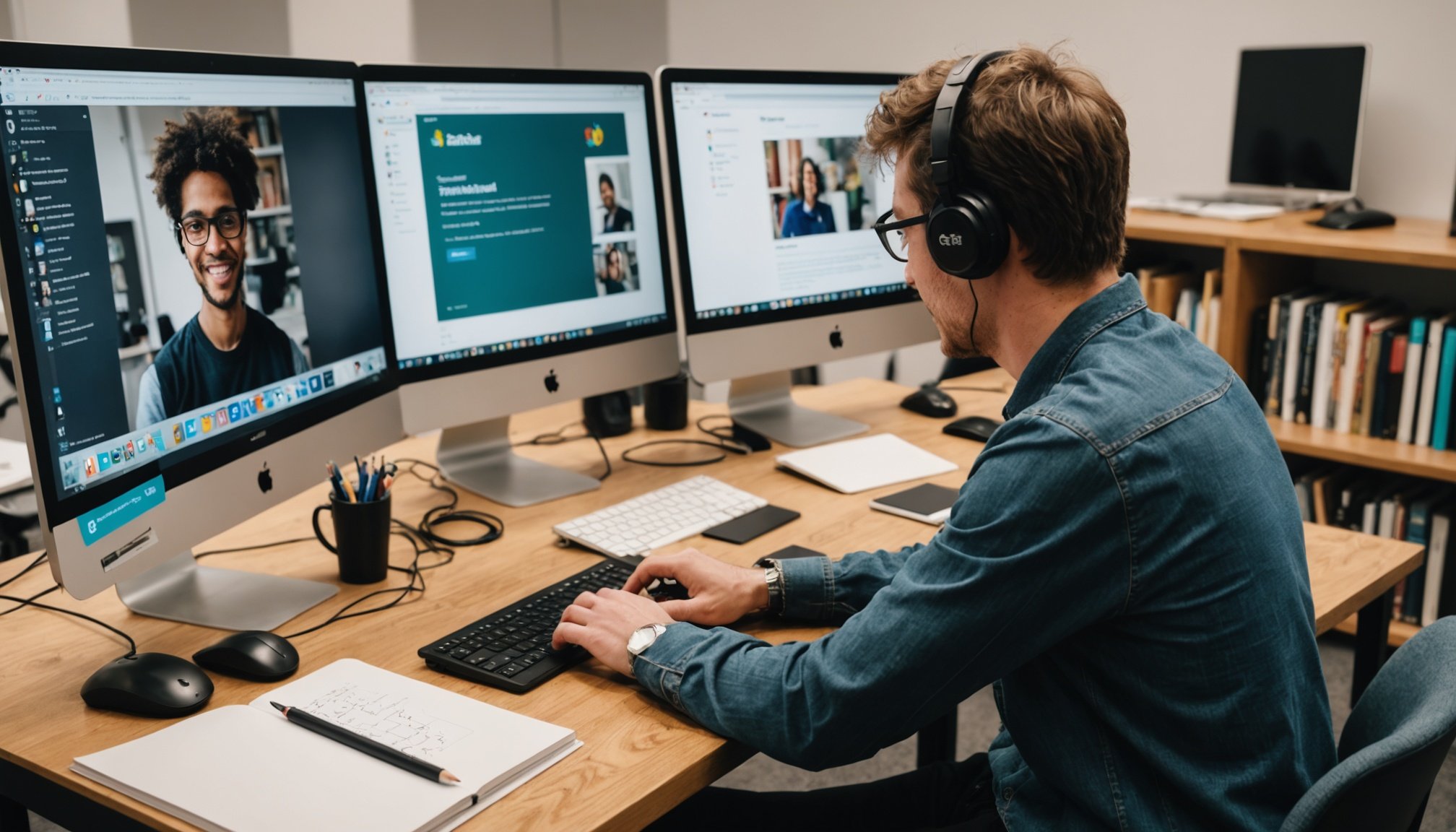Innovative Teaching Strategies for Remote Learning
In the evolving sphere of remote education, creative teaching methods have become crucial for effective virtual instruction. These methods serve as vital tools in overcoming the challenges of distance learning, ensuring student engagement and comprehension. A prominent approach is the flipped classroom model, which is particularly beneficial in virtual environments. This pedagogical technique involves students reviewing lecture material at their own pace before class, thereby fostering interactive discussions and problem-solving during synchronous sessions.
Another pivotal aspect of remote education strategies involves integrating interactive content to captivate students’ attention and promote active learning. Platforms offering multimedia resources, simulations, and digital storytelling are excellent for engaging students through diverse learning experiences. These elements not only make lessons more relatable but also cater to various learning styles, enhancing overall academic performance.
Also read : Transforming UK Manufacturing: Cutting-Edge 3D Printing Techniques Driving Innovation
To keep students motivated, it’s essential to incorporate methods that encourage participation. For instance, live polling, quizzes, and breakout group discussions help maintain student involvement and ensure that learning is a two-way street. By combining traditional pedagogical concepts with innovative remote education strategies, educators can create enriching and interactive virtual classrooms tailored to modern needs.
Tools and Technologies for Enhanced Learning Experiences
To effectively integrate remote learning, the adoption of educational technology is essential. This encompasses a variety of online learning tools and digital resources tailored to enrich the education process.
Also to see : Transforming healthcare in the uk: how wearable technology is shaping the future of patient monitoring
Video Conferencing Platforms
Video conferencing platforms like Zoom and Microsoft Teams have become indispensable in virtual education. Both offer essential features such as breakout rooms, which facilitate small-group discussions, as well as screen sharing to present learning materials clearly. Best practices for using these platforms include ensuring clear audio and visual elements, encouraging student participation, and setting clear communication guidelines to maintain a smooth virtual classroom experience.
Learning Management Systems (LMS)
When it comes to Learning Management Systems, UK universities have an array of options, such as Moodle and Blackboard. These systems play a pivotal role in enhancing user experience by offering accessible interfaces and mobile compatibility. Comparative evaluation of these platforms reveals differences in customization, scalability, and support, suggesting that best choices depend on institutional objectives and user preferences.
Interactive Learning Tools
Leveraging tools like Kahoot and Quizizz brings a layer of interactivity to learning. The incorporation of gamification through quizzes and challenges stimulates student motivation and participation, transforming traditional learning sessions into engaging and interactive experiences.
Fostering Community in Remote Learning Environments
Establishing a strong online community is crucial in keeping students connected and motivated in a virtual learning environment. Promoting student engagement through structured initiatives, such as scheduled group discussions and interactive online forums, creates avenues for consistent peer interaction. This approach nurtures a sense of belonging, essential for student well-being and success.
One effective strategy involves incorporating collaborative learning by assigning group projects or tasks that require regular communication and teamwork. By doing so, students build not only academic skills but also interpersonal ones, enhancing their overall educational experience. Furthermore, online forums and educational social media groups offer platforms for students to share insights and support one another, creating a safety net of academic and emotional reinforcement.
Deploying these remote education strategies empowers students to actively contribute to their learning journey. With the integration of robust pedagogical techniques, educators can foster a dynamic and inclusive learning community. Encouraging students to use digital resources to interact beyond classroom activities also instills an ongoing connection, essential for their development and retention. Prioritising this aspect of remote learning ensures that regardless of geographical barriers, every student feels part of a cohesive and supportive academic community.
Case Studies of Successful Remote Learning Practices
Exploring successful implementations in remote education offers valuable insights into effective pedagogical practices. Educational case studies provide real-world examples, highlighting best practices and innovative solutions adopted by institutions globally. An instance of such success is the approach taken by top UK universities, which have been exemplary in adapting to the challenges posed by the pandemic.
UK Universities Leading the Way
One top UK university’s use of flipped classrooms redefined learning by engaging students in pre-class preparations, allowing for enriched discussions during live sessions. This methodology fostered student autonomy and active participation, key elements of impactful remote education. Through such strategic adaptations, these institutions set benchmarks for best practices in virtual learning environments.
Faculty Innovations
Faculty members have been at the forefront of remote education innovation, developing unique courses and programs tailored for online delivery. For examples, educators have integrated educational technology to create immersive and interactive coursework, enhancing the learning experience. These faculty-led initiatives demonstrate the potential for creativity in overcoming the limitations of virtual classrooms.
Student Feedback and Adaptation
Feedback from students has been instrumental in refining remote learning methods. Universities have listened and made responsive changes in course delivery. Adjustments informed by student feedback have led to improved engagement and satisfaction, illustrating the importance of an adaptive approach in educational success.
Expert Opinions and Future Trends in Remote Learning
As remote learning evolves, expert insights become invaluable in shaping future strategies. Leading educational figures emphasize the necessity of adaptive methodologies that cater to diverse student needs. They predict an increased reliance on artificial intelligence and data analytics to personalize learning experiences, ensuring students receive educational resources tailored to their strengths and weaknesses.
The rapid advancement of educational technology is expected to continue, with trends pointing toward more immersive and intuitive platforms. Virtual reality and augmented reality are set to play significant roles, offering students realistic simulations that enhance understanding and engagement.
The future of education hinges on creating equitable access to these technologies, a point echoed by experts. Ensuring all students have the necessary tools and connectivity is critical for eliminating educational disparities. Efforts to bridge the digital divide will be vital in fostering an inclusive learning environment.
Continuous improvement and adaptation remain at the forefront. Educational institutions are encouraged to remain agile, responding to changing technological landscapes and student feedback. By doing so, they can secure a robust, future-proof remote learning model that meets the needs of both present and future learners.











